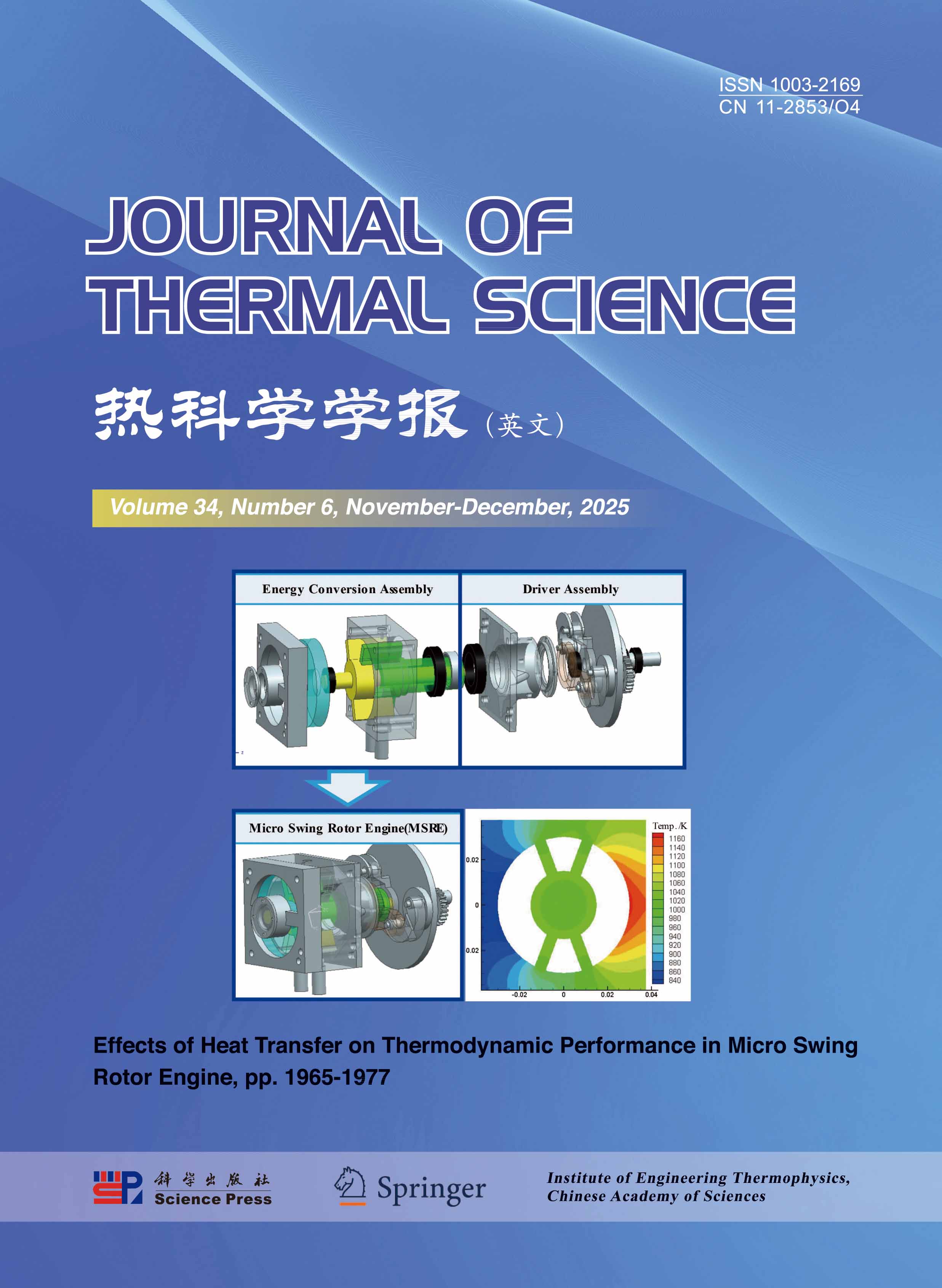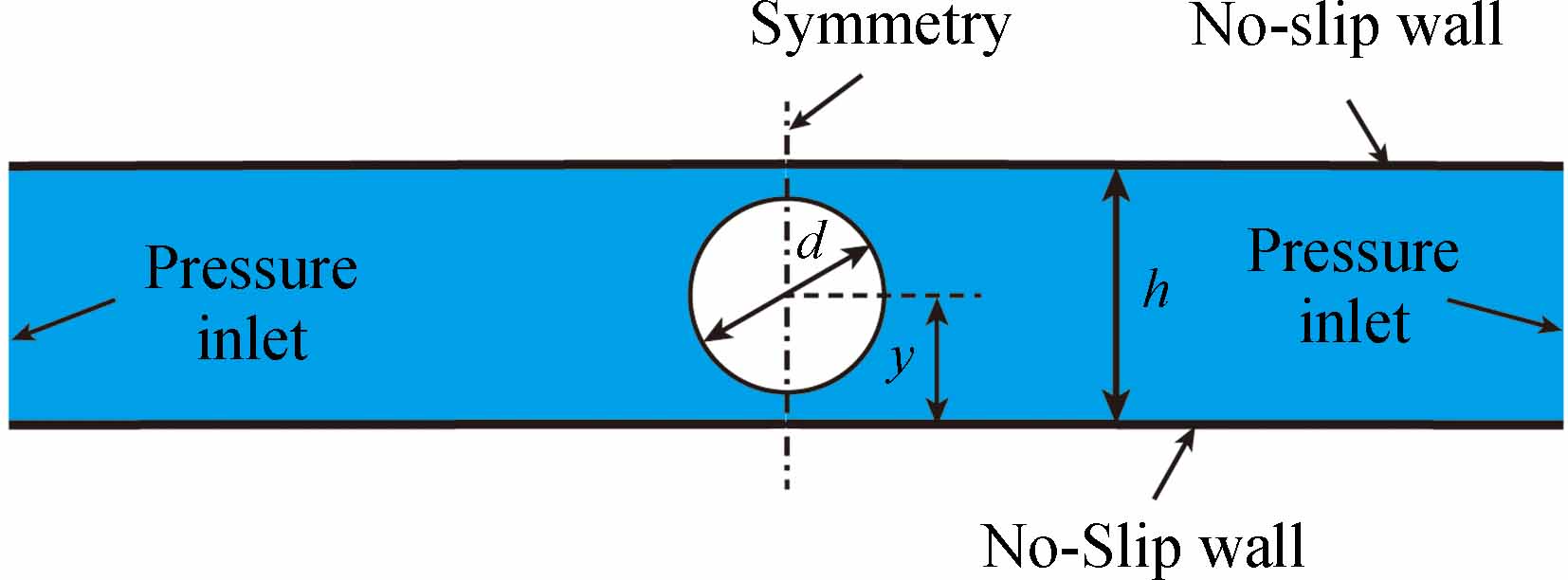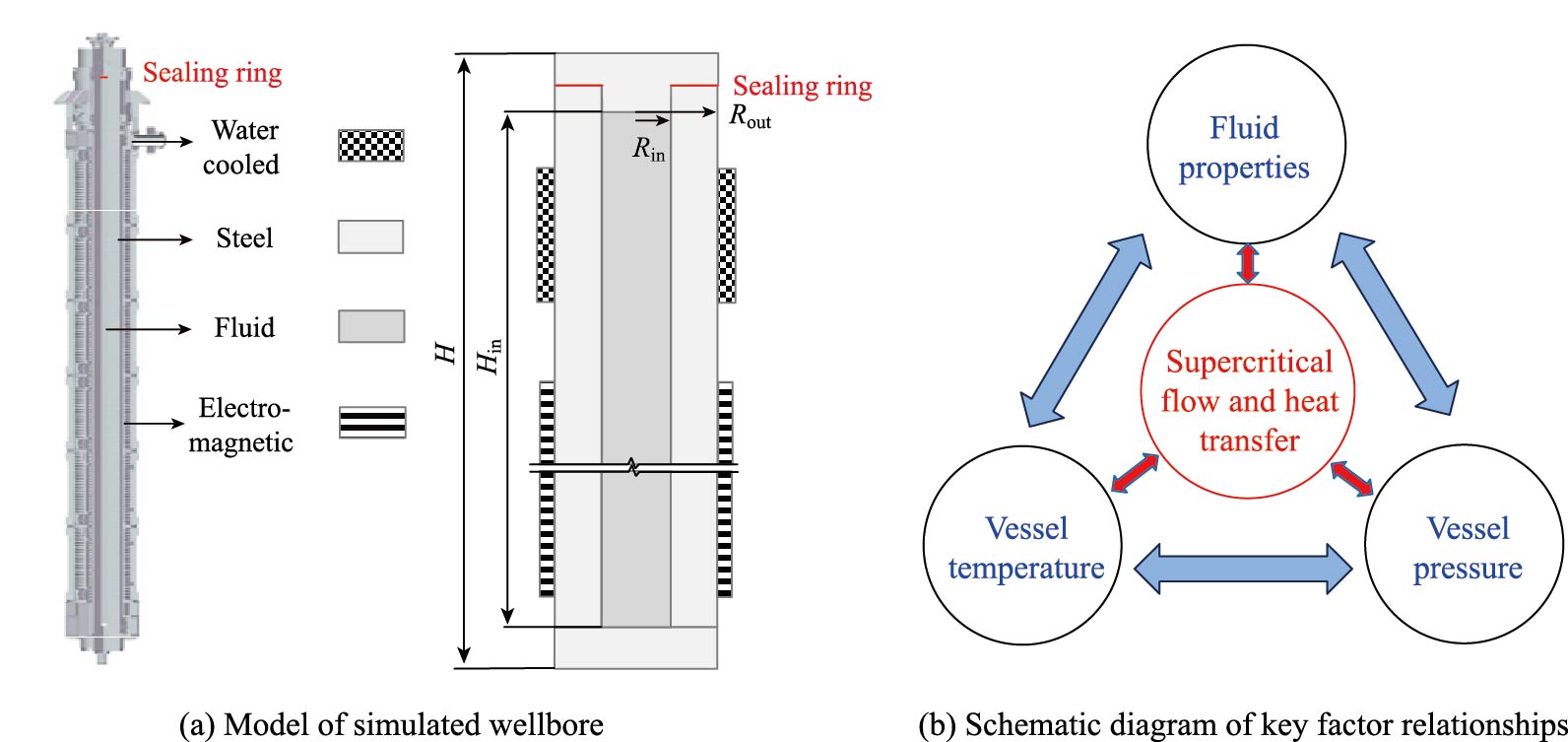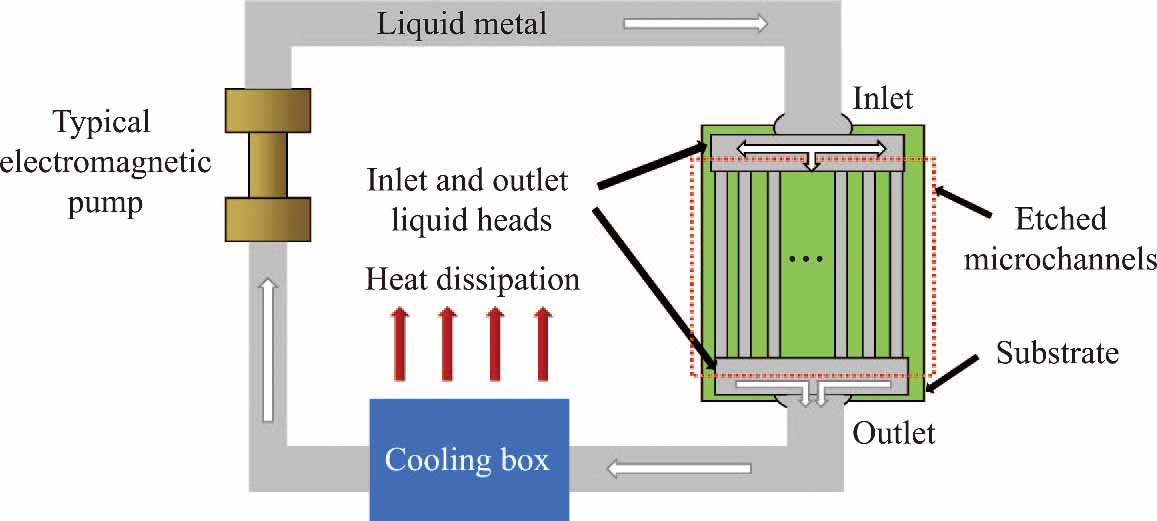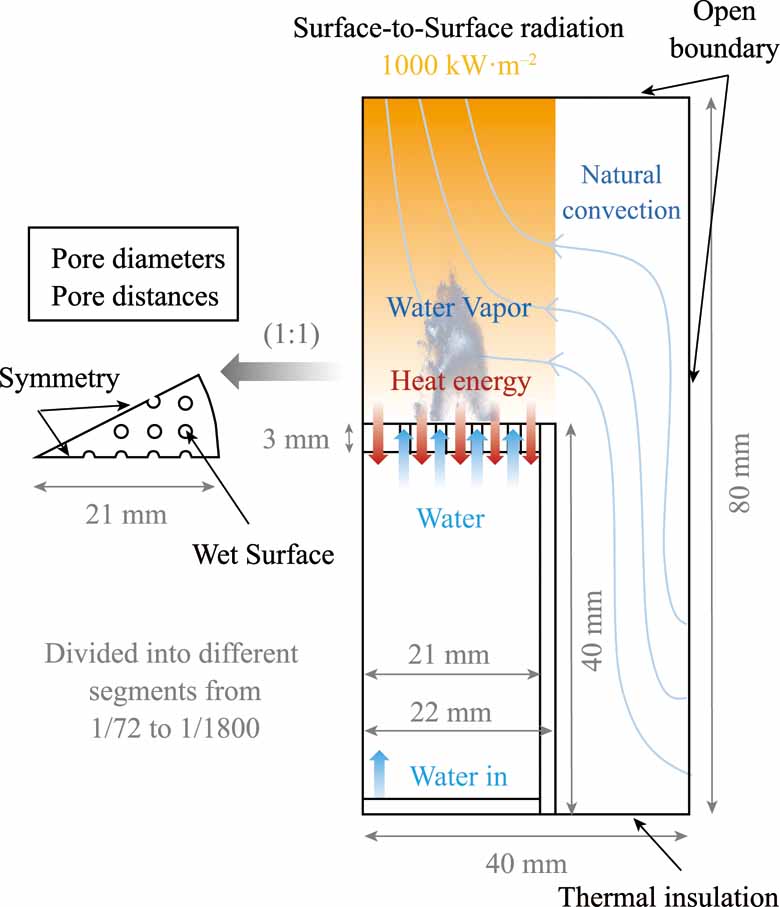WEN Xiaoting, MENG Tingting, SU Jin, HU Guifu, PAN Qinghui, SHUAI Yong
Solar-driven interfacial water evaporation technology offers a zero-carbon, sustainable solution for extracting clean water from seawater and wastewater, presenting an effective strategy to address the global water crisis. This study has employed finite element simulation to investigate the solar interfacial evaporation process, elucidating the interactions between heat, water, and salt during evaporation. Additionally, the internal water channels of the evaporator are optimized and designed using topology optimization techniques. In this project, a cylindrical evaporator model with vertical micropores is developed from carbon-based polymer materials. The impact of pore diameter and spacing on the evaporation rate is analyzed, alongside the effects of thermal conductivity, solar radiation intensity, and ambient wind speed on the evaporator’s performance. Simulations have revealed that with a pore diameter of 20 μm and a spacing of 0.55 mm, the evaporator achieves the highest evaporation rate of 0.91 kg·m–2·h–1. The findings indicate that smaller pore sizes substantially enhance the evaporation rate, while larger pore spacings initially increase, and then decrease the rate. Further optimization involves using 20 μm-diameter round pores and adjusting the cross-sectional shapes of the pores based on topological configurations with a material volume factor of 0.5. The optimized structure demonstrates an evaporation rate of 2.91 kg·m–2·h–1, representing a 219.78% increase over the unoptimized design. These optimized structures and simulation results provide valuable insights for future evaporator designs.
